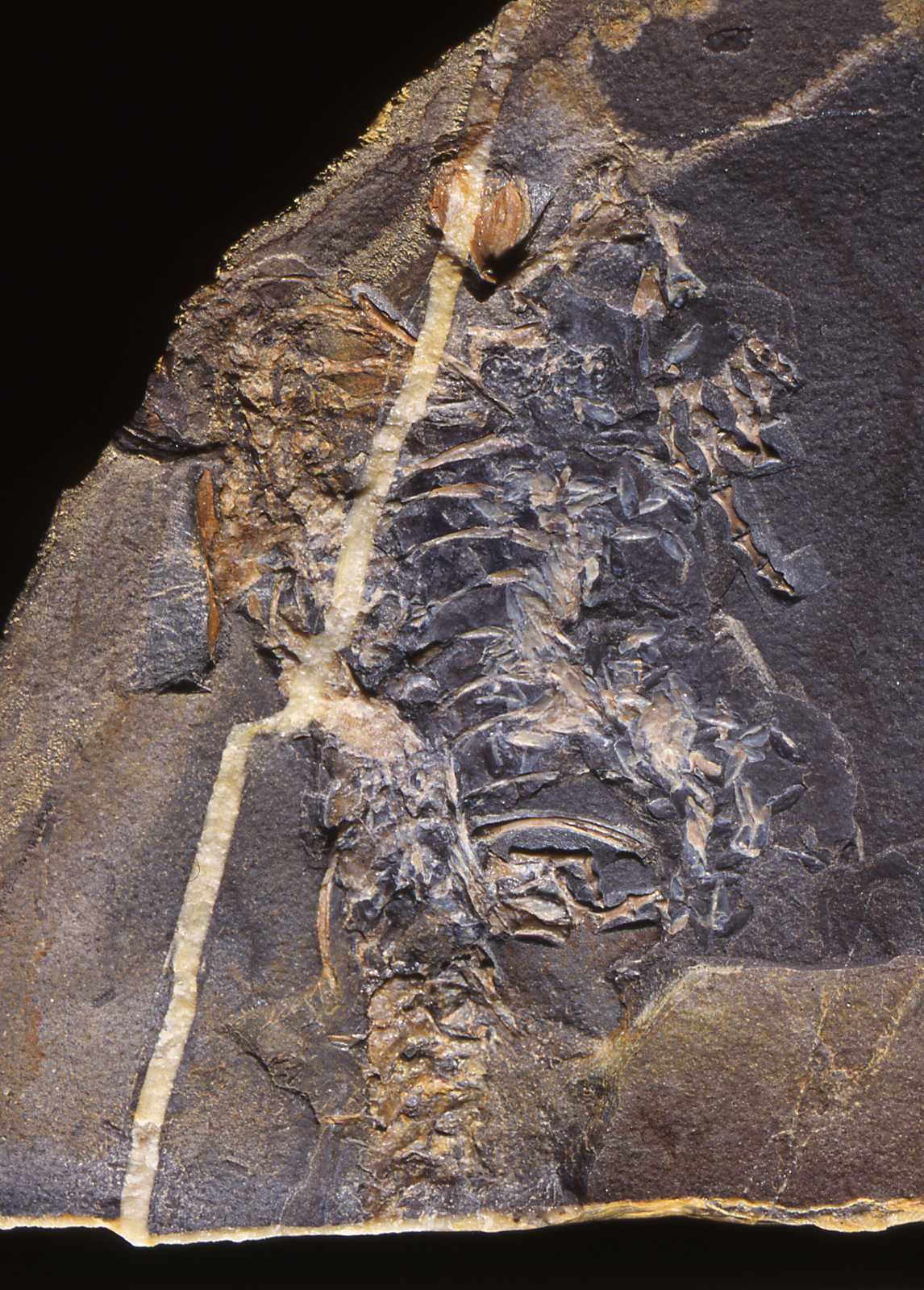- Casineria
Taxobox
fossil_range =Middle Mississippian
name = "Casineria"

image_caption = Casineria kiddi from the Lower Carboniferous of Scotland, UK
regnum =Animal ia
phylum = Chordata
subphylum = Vertebrata
superclassis =Tetrapod a
unranked_familia =Amniota
genus = "Casineria"
binomial = "Casineria kiddi""Casineria" was a
tetrapod which lived 340 million years ago in the Mississippian period. "Casineria" was very small (15 centimeters long), but its skeleton was more advanced than the primitivetetrapods , and it was more closely related toamniote s than toamphibian s. "Casineria" may have been one of the very first trueamniote s, a group which consists ofsynapsids andsauropsids , and it pushes back the origin of amniote lineages much farther than was previously realized.Fact|date=March 2008 "Casineria", phylogenetically, is placed bypaleontologist s as a basal ("primitive") member of the group Amniota, though it may lie just outside the group, as a basal member of Amniota "sensu lato". Like most primitive amniotes, this creature was aninsectivore , and it may have laid eggs on land. This earliest amniote had five fingers on each hand.Discovery
In 1992, an amateur fossil collector spotted the remnants of this four-legged creature on the shore of Cheese Bay, Scotland. [http://www.jncc.gov.uk/pdf/gcrdb/GCRsiteaccount2916.pdf] For the next five years, work on the fossil languished at the
National Museums of Scotland in Edinburgh while researchers focused on other projects. Around 1997, work began to expose the remanider of the fossil from the surrounding matrix. the work revealed that the animal probably lived in an environment much drier than previously understood. The findings were first reported in the April 8, 1999 edition of "Nature". [R. L. Paton, T. R. Smithson and J. A. Clack, "An amniote-like skeleton from the Early Carboniferous of Scotland", [http://www.nature.com/nature/journal/v398/n6727/abs/398508a0.html (abstract)] , "Nature" 398, 508-513 (8 April 1999)]In the early Carboniferous period before the appearance of Casineria, vertebrates were aquatic. Casineria and its relatives were the first vertebrates to live and reproduce on land.
Notes
References
*Richard Monastersky, [http://www.sciencenews.org/pages/sn_arc99/5_22_99/bob1.htm "Out of the Swamps: How early vertebrates established a foothold—with all 10 toes—on land"] , "The Weekly Newsmagazine of Science", Volume 155, Number 21 (May 22, 1999)
Wikimedia Foundation. 2010.
